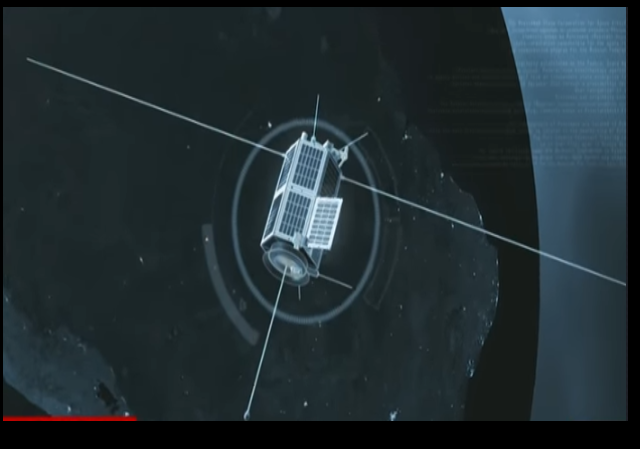Russian Satellite Breaks Apart in Orbit, Generating Debris Cloud That Could Last for 100 Years
In another incident, two huge pieces of Russian space junk came within 19 feet of colliding in a ‘worst-case scenario.’

The US Space Force reported that a mysterious Russian satellite broke apart early last month, generating a debris cloud that could remain in Earth orbit for years.
The Kosmos 2499 spacecraft disintegrated on the night of Jan. 3, according to the U.S. Space Force’s 18th Space Defense Squadron (18th SDS), which tracks human-made objects in orbit.
The breakup event generated at least 85 pieces of trackable debris, 18th SDS said via Twitter on Monday (opens in new tab) (Feb. 6). That cloud of space junk is orbiting 726 miles (1,169 kilometers) above Earth — so high that it’ll likely take a century or more (opens in new tab) for atmosphere drag to bring it down.
The 18th SDS did not speculate about the cause of the breakup. And that’s far from the only mystery surrounding Kosmos 2499.
And while other satellites have created larger debris fields when they have broken apart, this one is so high that it may be a century before all the bits are incinerated upon reentry to Earth’s orbit.
But the pieces of Kosmos 2499 are orbiting at an altitude of about 745 miles — so high that they’ll probably be there for a century or longer before Earth’s atmosphere drags them down and burns them up, according to NASA.
Kosmos 2499 is one of three satellites that Russia launched secretly from 2013 to 2015. Its beginning is even more mysterious than its end.
NASA and the US Department of Defense did not immediately respond to Insider’s requests for comment.
A review of the records shows that this is actually the second breakup event for Kosmos 2499.
The first fragmentation occurred on October 23, 2021, according to Jonathan McDowell, an astronomer at the Harvard-Smithsonian Center for Astrophysics who also tracks space debris. That event created 22 pieces of trackable debris.
This satellite has had a curious history. Russia quietly launched KOSMOS 2499 on May 23, 2014. But tracking indicated the satellite performed unusual maneuvers, leading some to speculate that it may be an experimental anti-satellite weapon, satellite maintenance vehicle, or collector of space debris.
However, an article published on the official Moscow Institute of Physics and Technology website indicated the satellite was designed to test experimental plasma propulsion engines/ion thrusters.
Both the first and now second breakup event was thought to be caused by an explosion of that propulsion system. LeoLabs, Inc., a commercial provider of low Earth orbit mapping and tracking also tweeted about the current situation, saying that their analysis points toward a low intensity explosion, “due to the asymmetry of the debris cloud, magnitude of the velocity imparted to the fragments, and a known energetic source on board (i.e. the propulsion system).”
ATTN 👉 Our *preliminary* analysis of the Cosmos 2499 fragmentation event (using LeoLabs LeoRisk) points toward a low intensity explosion with moderate confidence. #SpaceDebris https://t.co/gOUlAbuHZW
— LeoLabs (@LeoLabs_Space) February 8, 2023
This news follows close reports of another incident involving massive bits of defunct Russian space junk that came within just 19 feet of colliding with each other in what was a dangerous near-miss in low-Earth orbit.
The dramatic moment between a dead spy satellite and an old Soviet rocket will reignite concerns about the crowdedness of low-Earth orbit, with space agencies and private firms around the world trying to come up with solutions on how best to deal with it.
Most of the objects pose very little threat to us here on the ground – because a lot of space rubbish would just burn up if it ever entered the atmosphere – but in orbit there are important satellites providing GPS and weather warnings that could be damaged, as well as the International Space Station.
Satellite monitoring and collision detection firm LeoLabs spotted the near-miss and said it was ‘too close for comfort’.
The company identified the two objects as a leftover SL-8 rocket and a Cosmos 2361 Russian spy satellite.
 DONATE
DONATE
Donations tax deductible
to the full extent allowed by law.








Comments
This was the premise of the movie “Gravity” and further back…. the TV series “UFO” where debris could hide UFOs. Life supersedes sci-fi.
“Gravity” suspended orbital mechanics rather severely. There is in fact the Kessler Syndrome though (cascading collisions) where once it’s dense enough, successive satellites are smashed leading to even more debris to smash everything.
I watched Gravity twice. How did the film violate orbital mechanics?
Side note: anybody know how I can apply settings here such that I am automatically notified via e-mail whenever somebody posts a response to my comments? This functionality used to exist but seems no longer does.
Thanks,
JSN
Really? I’ve NEVER been notified of ANYTHING..
I am a HUGE fan of the UFO television series. A remake would get me watching television again.
Just based on my recollection of that 1970 TV series, Cmdr. Straker was indeed able to convince Gen. Henderson to release funding for removal of space junk.
Thanks, AB, for the memory !
Tomorrow, Space-X is announcing their “ADOPT A HIGHERWAY” program…
The pieces will just provide good target-in-motion practice for my grandson’s generation
2499. Yeah. It was known to be shop-worn and was marked down from 3795.
Call in Pete Butthead to solve it.
Or not.